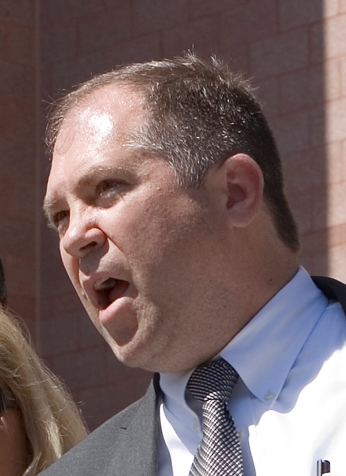Report lauds Nevada’s foreclosure mediation program
A Justice Department report released last month praises the Nevada Foreclosure Mediation Program, saying it provides a road map for other states to follow in addressing the continuing fallout from the housing crisis.
Michael Sommermeyer, the program's quality assurance manager, said the report singles out the program for the way it records mediation results.
"The DOJ is recommending our process (be) utilized in the rest of the country," Sommermeyer said.
Nevada, ground zero for the nation's housing crisis, which spawned the Great Recession, has the highest foreclosure rate in the country. The dubious distinction prompted lawmakers in 2009 to create the mediation program. They tasked the Supreme Court with its creation and implementation.
The data recorded by program staffers show that between September 2009, when the program started, and September, 13,813 Nevada homeowners have participated.
Of those, nearly 3,900 homeowners obtained loan modifications that allowed them to stay in their homes.
More than 2,000 others agreed to foreclosure alternatives, such as short sales, characterized in the report as "graceful exits."
The roughly 8,000 remaining people participated in a failed mediation in which the lender could not produce the required documents or the lender's representative did not have authority to take action, Sommermeyer said.
"I call them the in-limbo guys," he said. "They didn't get a loan modification, but the bank didn't get a certificate to foreclose, either."
Those 8,000 buyers remain in their homes pending a final resolution.
The program's data also show foreclosure notices have dropped in recent months, from several thousand a month to about 100.
But Sommermeyer said the data show the decline doesn't mean the crisis has played out. He said the drop is because of Assembly Bill 284, a law that took effect in October. It requires lenders to submit an affidavit showing they have authority to foreclose on a property.
"Banks can't prove that," Sommermeyer said. "They have to prove they have authority, and they can't."
Banking representatives have said the slowdown is because of their desire to comply with the new law and avoid the robo-signing scandals that cropped up the past two years.
Sommermeyer said program staffers deserve the Justice Department's praise. For example, he said, Verise Campbell participated in a panel at the White House in November 2010. It was hosted by the Justice Department's Access to Justice Initiative and Vice President Joe Biden.
The Justice Department evaluated how states addressed the foreclosure crisis after the panel discussion, looking for what worked best, and singled out Nevada's program for developing policies and procedures other states could implement.
Nevada essentially invented the wheel, so other states, such as Hawaii and Washington, wouldn't have to start from scratch, Campbell said.
"As one of the first statewide nonjudicial foreclosure mediation programs, we felt it important to develop a model that could easily be duplicated by other programs," said Campbell, the program's deputy director.
Sommermeyer said data collection in the program continues to be improved. Sometime in the spring, he said, information about lenders and how well they comply with the program's mandates will be stored on the program website at http://foreclosure.nevadajudiciary.us/.
Contact Doug McMurdo at dmcmurdo@review
journal.com or 702-224-5512.






















